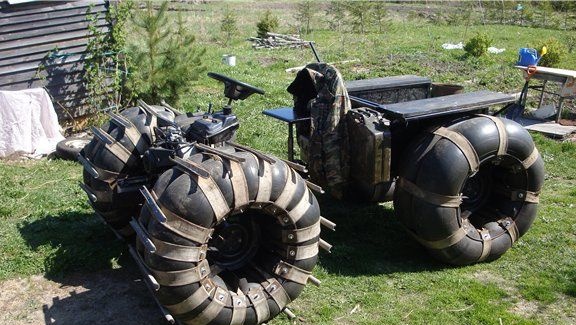
The weight of the all-terrain vehicle is 250 kilograms. maximum speed up to 50 kilometers per hour. On the all-terrain vehicle, paired cameras from KAMAZ are installed. Installed gearbox from a Skoda car. All terrain vehicle able to overcome climbs of 50 degrees in fourth gear. It was created for hunting and fishing. That is why an all-terrain vehicle can swim across water obstacles.
Materials, parts and assemblies used for the construction of this karakat:
1) Engine from a 150 cm3 scooter
2) cameras from KAMAZ
3) Gearbox from Skoda
4) bridges from vaz 2103
5) profile pipe
6) wheels from a classic vase
7) gear from vaz 2101
8) gazelle gear
Consider in more detail the design of the all-terrain vehicle, as well as the main work carried out by the author.
The all-terrain vehicle fracture assembly is made of a home-made pipe, and the sleeve is turned on a lathe to scan a piece of a bipod from the steering vase and then connected by welding.
Below is a photo where you can see how the fracture node was made:
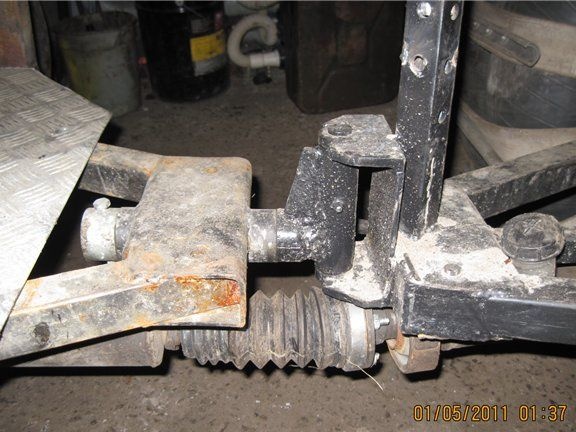
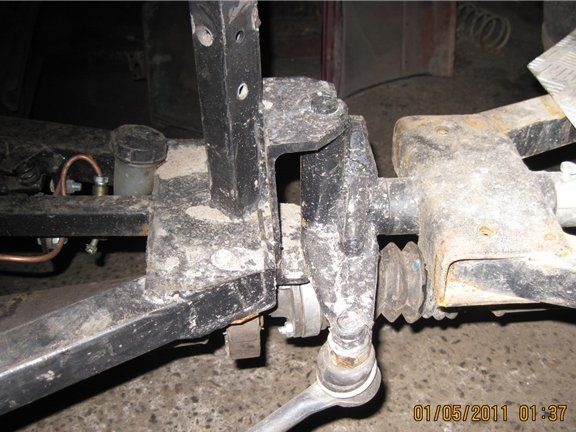
Then the author began work on the wheels of the all-terrain vehicle. To do this, standard disks from a classic vase were taken, through the cuts of eight parts, the T-shaped strips made of reinforcement at the edges were welded. Cameras from KAMAZ were dressed on the disks, which were upgraded with fire hose tapes with riveted pieces of 40 mm PVC pipe to increase grip.
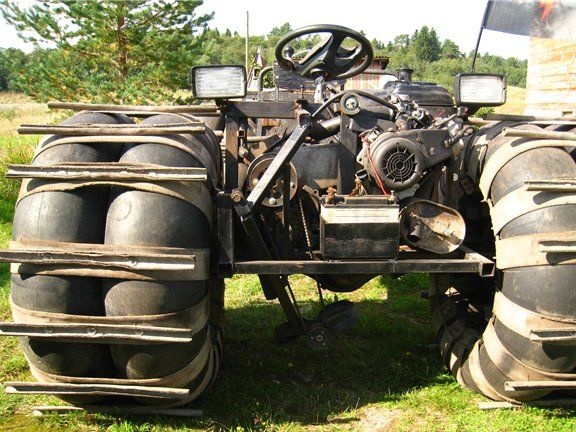
A gearshift from Skoda was installed, which has four gears and a reverse. It is connected to the engine from a scooter using a chain drive from a vase camshaft.
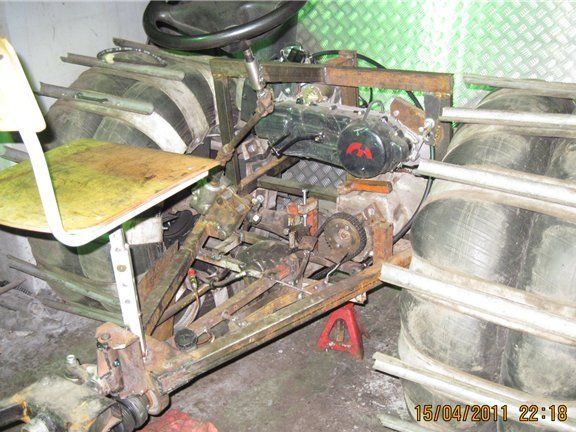
The all-terrain vehicle is able to swim, but it does not sail well, since the weight is shifted to the front axle of the all-terrain vehicle, therefore the muzzle of the all-terrain vehicle is submerged on more than half of the wheel, and the rear wheels are much smaller. For the same reason, movement in water is very slow and poorly manageable. Floats badly overloaded his face. plunges more than half the wheel face and rear less than half the wheel. Rows slowly and practically does not operate on water.
In the future, the author plans to install a propeller behind the all-terrain vehicle, which should solve these problems.
The gearbox from the VAZ 2101 was installed, as well as the gearbox from the gazelle as a steering gear.
Then the author proceeded to test the all-terrain vehicle. With 30 kilometers of track and a loaded mass on an all-terrain vehicle in the form of four people and a load of 90 kilograms, the all-terrain vehicle spent about 15 liters of fuel, with the main route running through swamps and off-road. The all-terrain vehicle drove to the limit of its capacities mainly in first and second gears.
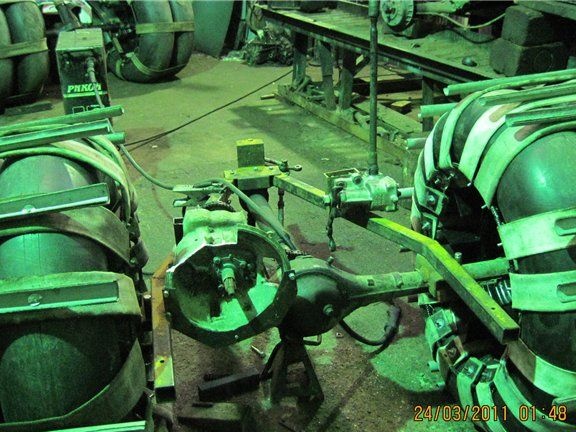
ATV Test Video:
During some of the tests, the all-terrain vehicle was turned upside down, which led to the failure of the outboard bearing:
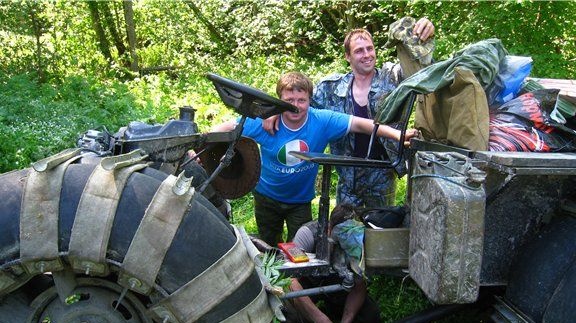
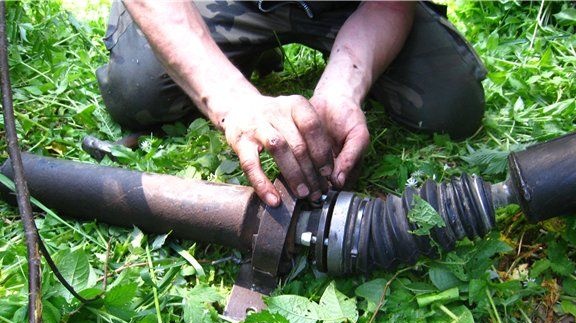
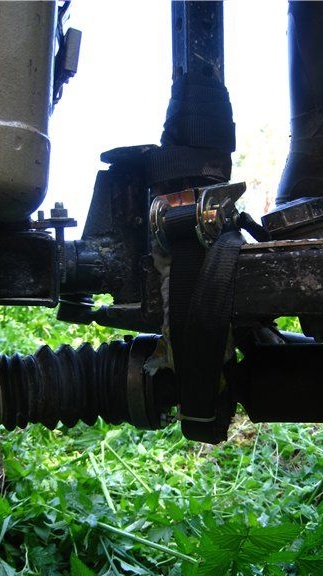
A limiter has been installed so that this does not happen again.
After the repair, the author began work on the buoyancy of an all-terrain vehicle. To increase buoyancy, foam was attached to the wheels, and for greater speed of movement and control control, a propeller was made. For testing, it was welded directly, but during the tests it turned out that this method of attachment interferes with the reverse, as well as reduces the clearance of the all-terrain vehicle, as well as it is difficult to call into the depth and, moreover, to go ashore.
Therefore, the author further began to consider other options for fastenings, as a result, a lifting lever was made with a stretch, so that it was possible to release the screw in the water, and when going ashore raise it.
From the propeller, the speed on the water increased by 3-5 kilometers.
Another option was considered mounting the screw on the driveshaft, but the main drawback of this design is that the wheels will rotate with the screw. The driveshaft rotates at a speed of 800 revolutions in 4th gear, timing gears are 1 to 2, so the rotational speed of the screw will be under 1600 revolutions. Therefore, it is necessary to install an intermediate shaft, or additional gears with chains, which clutters the design, so the author decided to leave the version with the screw up.
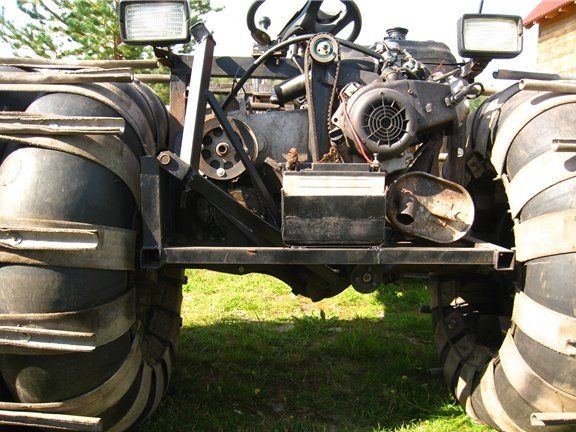

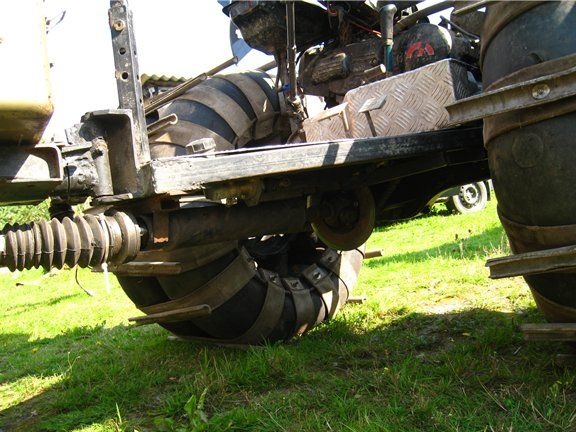
Another failure occurred while driving in third gear at full load. the output shaft of the gearbox was broken. The reason for this is a very large torque of about 50 kilograms per meter.
The car had to be taken out of the woods on a trailer and repaired in garage conditions.
The next time the second gear on the gearbox broke down, this time the author dismantled the gearbox on the spot and was able to drive another 17 kilometers on its own to the house where the full-scale repair was completed.
The steering from the Lada also failed, which was subsequently replaced by a steering from a gazelle.
If about a breakdown, then the steering gear was broken. Zhiguli changed to Gazelle.
Of minor damage, cameras were broken that were successfully sealed in place.
A limited-slip ball differential was installed on the rear axle of the all-terrain vehicle, due to which an excessive load appeared on the gearbox and the driveshaft drive shaft. The main load was a side chain, so the rear cover was redone and the bearing was installed inside.
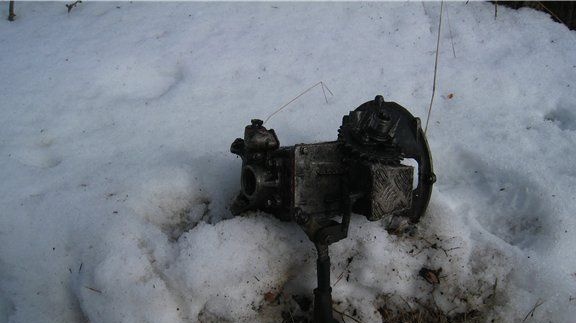
Photos of the off-road vehicle:
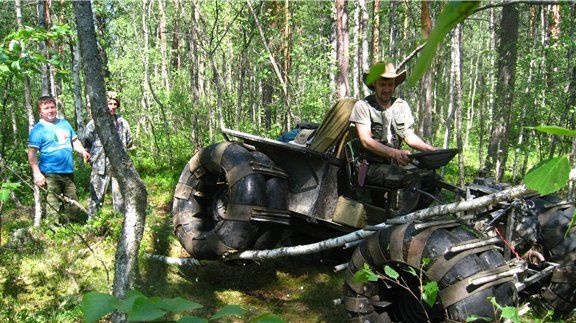
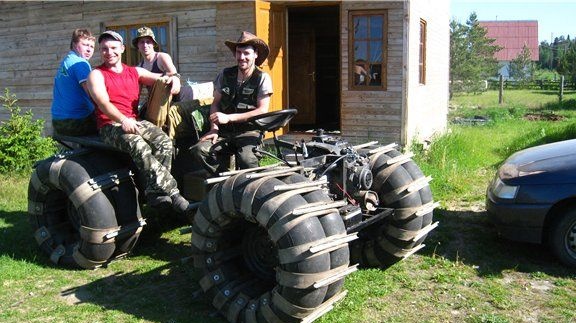
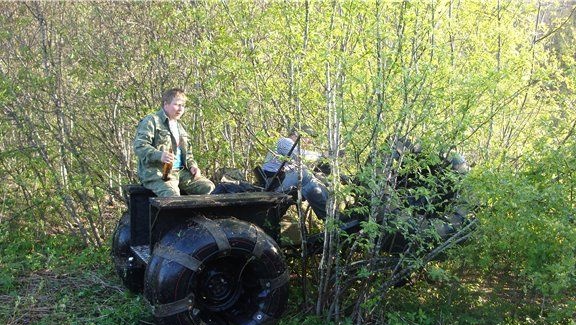
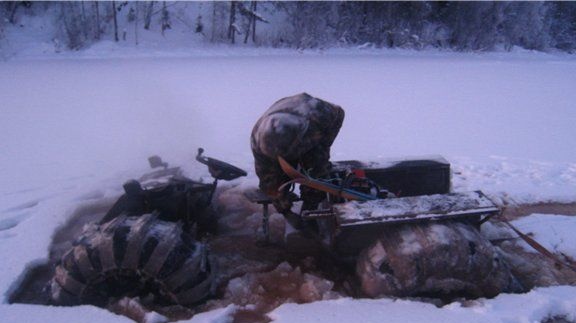
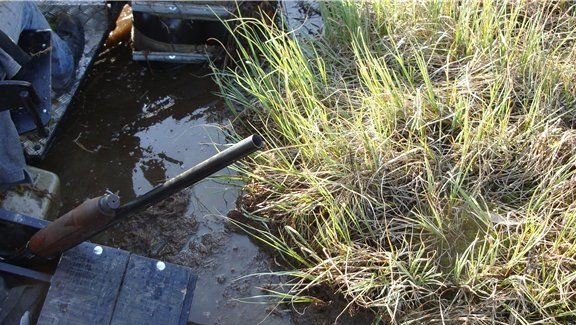
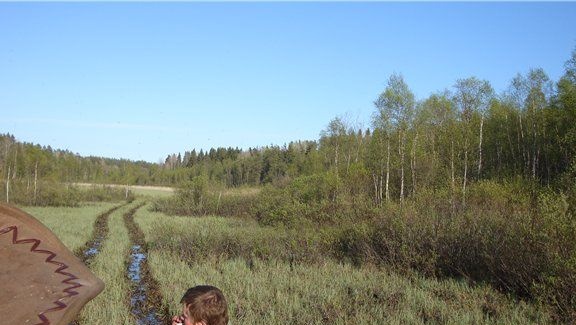
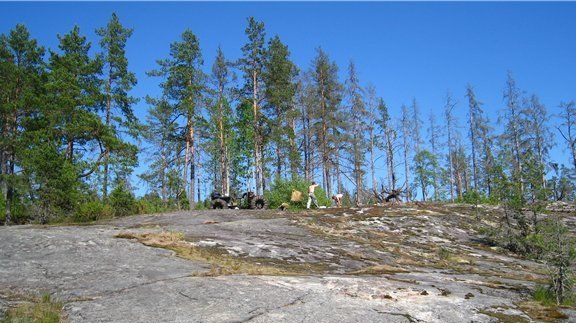
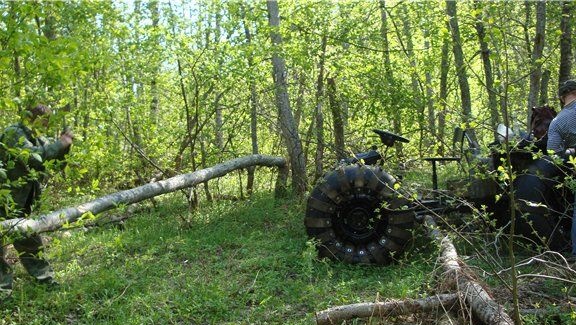
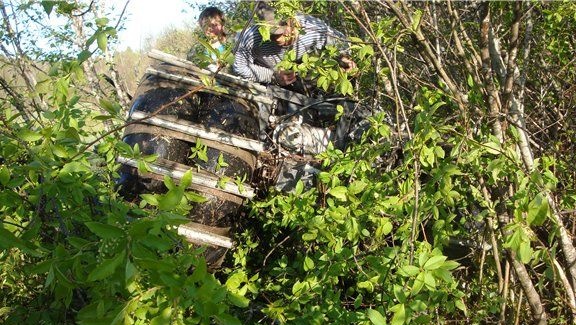
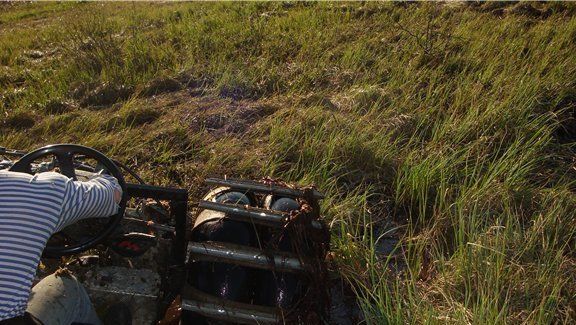
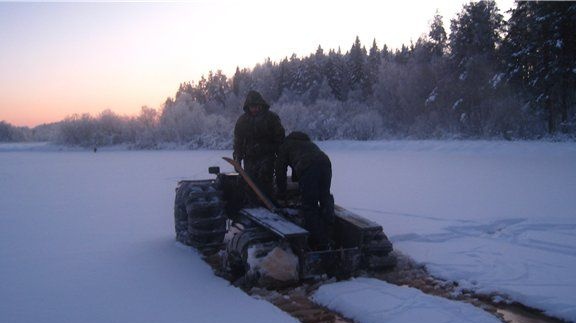
In this state, the author’s all-terrain vehicle was completely arranged and he did not resort to further upgrades, the only thing sometimes changes engines from 125 cm3 to 150 cm3, since in winter there is not enough power. But still, even this does not allow driving in deep snow at high speed due to the design of the all-terrain vehicle. Speed in deep snow is only 2 kilometers per hour, as there is not enough traction.
ATV Test Video:
The author of the all-terrain vehicle: Andrew with the nickname "Dyst" from the city of St. Petersburg.
